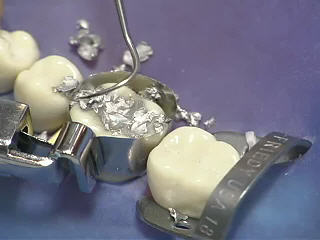| ||
WASHINGTON, July 29 -- Dental fillings that contain mercury are safe, but have been upgraded from low-risk to moderate-risk devices, the FDA said. In its final rule on dental amalgam, the FDA recommended that product labeling include warnings against use in patients with mercury allergy and that dental professionals use adequate ventilation when handling the product. The label should also have a statement about the product's benefits and risks -- including those from inhaling mercury vapor, the agency said. The FDA's action is the latest development in a long and contentious battle involving the agency, the American dental establishment, and a variety of consumer and environmental groups who argue that mercury-based amalgam fillings are potentially harmful. The rule was originally proposed in 2002 but received a large number of comments and was investigated further. A 2006 advisory committee meeting of dental and neurology experts asked that the FDA probe deeper into the scientific literature on dental amalgam before making a final rule. Consumer groups eventually filed a lawsuit to compel the agency to act. Throughout its review, the agency said it considered 200 scientific studies, reflected in the final rule issued today. The consumer groups who originally sued the agency expressed anger at the ruling, saying the agency reneged on promises to require tougher warnings about mercury-based amalgam, particularly involving children and pregnant women. "FDA broke its contract and broke its word that it would put warnings for children and unborn children," Charles Brown of Consumers for Dental Choice, told the Associated Press. He pledged to go back to court. Dental amalgam is 50% liquid elemental mercury and 50% powdered metals including silver, tin, and copper. The FDA considers dental amalgam fillings safe for adults and children age 6 and up. The agency says the amount of mercury in patients with dental amalgam fillings is well below levels associated with adverse health effects. Dental amalgam is a "pre-amendment device," meaning it was in use prior to May 28, 1976, when the FDA was given broad authority to regulate medical devices. That law required the FDA to issue regulations classifying pre-amendment devices according to their risk into class I, II, or III. Amalgam fillings are now Class II devices. Most fillings today are made of a composite of material that matches the color of tooth enamel, but many dentists say that for some applications, amalgam is still the material of choice. The agency had previously classified the two separate parts of amalgam but had not issued a separate regulation classifying the combination of the two |
Wednesday, 14 September 2011
FDA: Dental Amalgam Safe But Should Include Warning
Labels:
News Updates
Subscribe to:
Post Comments (Atom)


No comments:
Post a Comment